PERENNIALS > FREESIA > VARIETIES
Reviewed By DAN ORI

Dan has over 27 years’ under his belt caring for plants and gardens. Working as a Horticultural Instructor and Consultant, he draws on a diverse range of experience that includes working as a Head Gardener, Tree Surgeon, Garden Centre Trouble Shooter, and writer of academic papers. Dan has a Level 3 Diploma in Horticulture and is currently a candidate for the RHS’s most prestigious award – The Master of Horticulture.
IN THIS GUIDE
FREESIA GUIDES
Varieties
The native range of the Freesia genus spreads from Uganda and Kenya in East-Central Africa southward through South Africa.
German Botanist Christian Friedrich Ecklon first described this genus back in 1866 – he named the genus after his fellow botanist and good friend Friedrich Freese.1Freesia. (n.d.-b). Mindat. Retrieved March 16, 2023, from https://www.mindat.org/taxon-2747044.html
The genus has only 16 species of which the two from which the most popular cultivars descend – F. refracta and F. leichtlinii are South African natives.2Freesia. (n.d.-c). Kew Royal Botanic Gardens. Retrieved March 16, 2023, from https://powo.science.kew.org/taxon/urn:lsid:ipni.org:names:331198-2
“In my opinion, Freesia varieties should be selected by the nose as well as the eye,” says Dan Ori, a Horticultural Consultant.
“I recommend visiting some Victorian gardens to try and spot some, as often though it is a matter of buying or swapping a few and seeing what you think before you commit to buying multiple bags of corms.”
In nature their flowers are in white and in yellows, while those of F. laxa are in hues of pink to rose red.
Freesia horticulture has resulted in quite a number of hues in the yellow through red range.

Apart from these, crosses with and cultivars of related flowers from the Babiana genus within the same family, the Iris family, mean that Freesias include a handful of cultivars in blue and purple tones for a full spectrum of colours.
Freesias generally attain a height of 20-30cm.
Freesias, except F. laxa, have very attractive foliage of a rich green shade varying from a bright tone to a dark one.
The narrow leaves are strap-shaped or lance-shaped and grow in fans.
F. laxa varieties have wide-open star-shaped flowers – each flower has six tepals.
1) B. stricta

This bears cup-shaped flowers.
2) Freesia
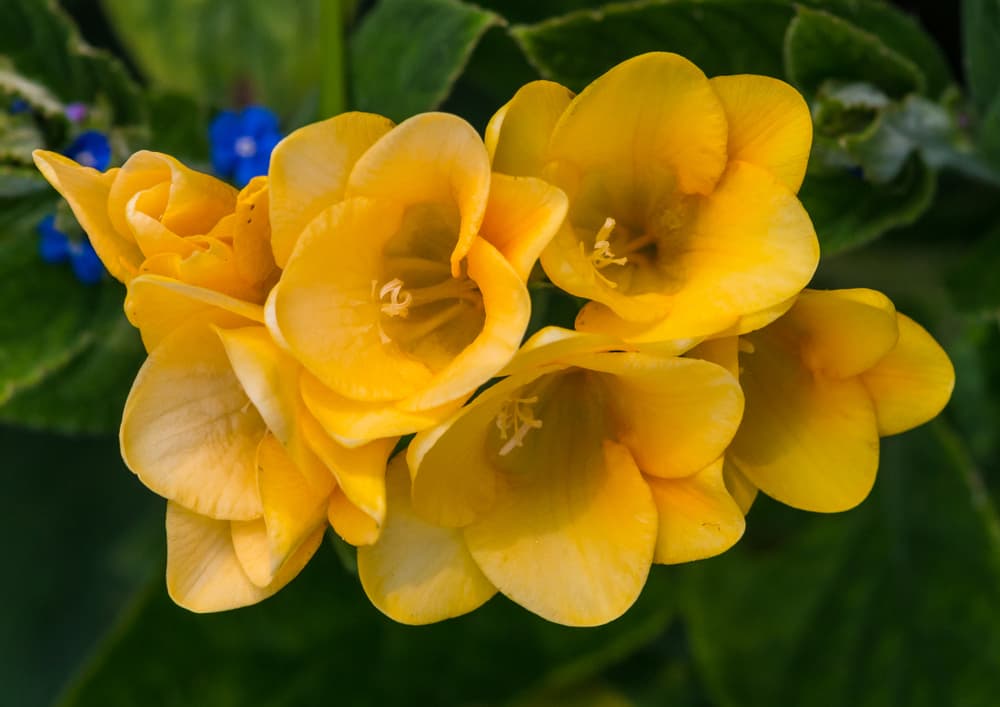
Produces zygomorphic inflorescences of six to eight blooms, trumpet-shaped or funnel-shaped, all pointing in the same upward-and-outward direction courtesy of the obliging flower stalks that gracefully arc and flex.
Blooms occur in white and in various light and pastel hues in – unlike many flowers – both the cool and warm colour spectra.
3) F. alba

One of the very first species to reach Europe and score an instant hit.
It is perhaps the one that is most renowned for being strongly perfumed; it has a rich, heady fragrance with a touch of spice.
The flowers are funnel-shaped and are white but sometimes off-white or cream, and have a golden yellow throat and yellow accents.
4) F. laxa
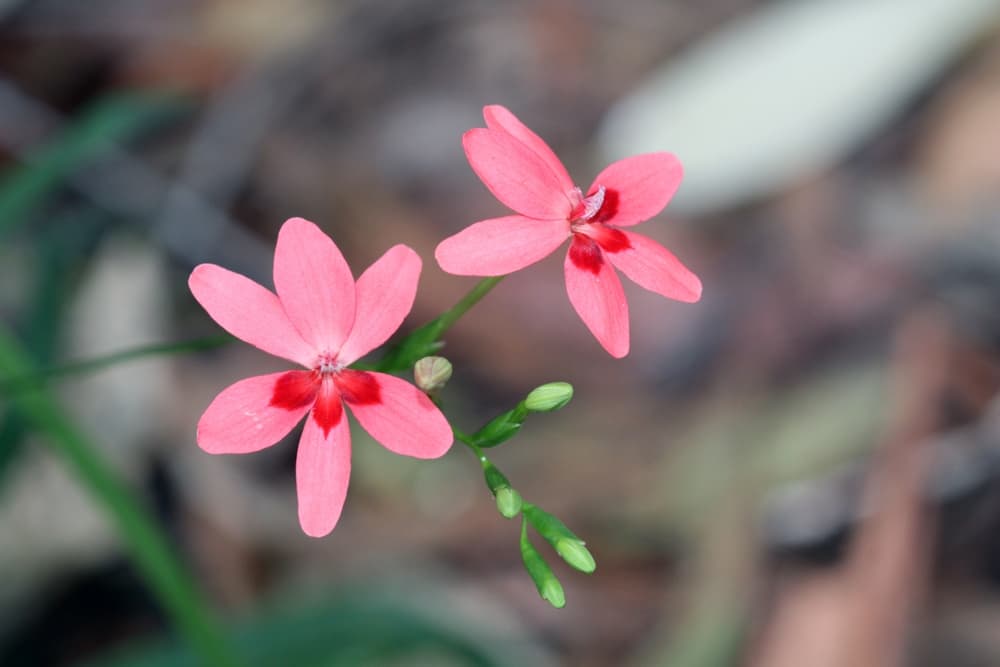
Hailing from Kenya, is different from the other established species in both foliage and flower.
The leaves are deep green and are sword-shaped.
The open star-shaped flowers are salmon pink to rose red, with the lower (three) tepals displaying darker-hued accents.
RHS Award of Garden Merit.
5) F. laxa var. alba
AKA: ‘White Flowering Grass’
A variety of F. laxa and is not to be confused with F. alba.
The leaves are suggestive of grass, being both extremely narrow and of a light, bright green hue.
The flowers are unusually open and are salver-shaped, and are pure white.
RHS Award of Garden Merit.
6) F. lactea
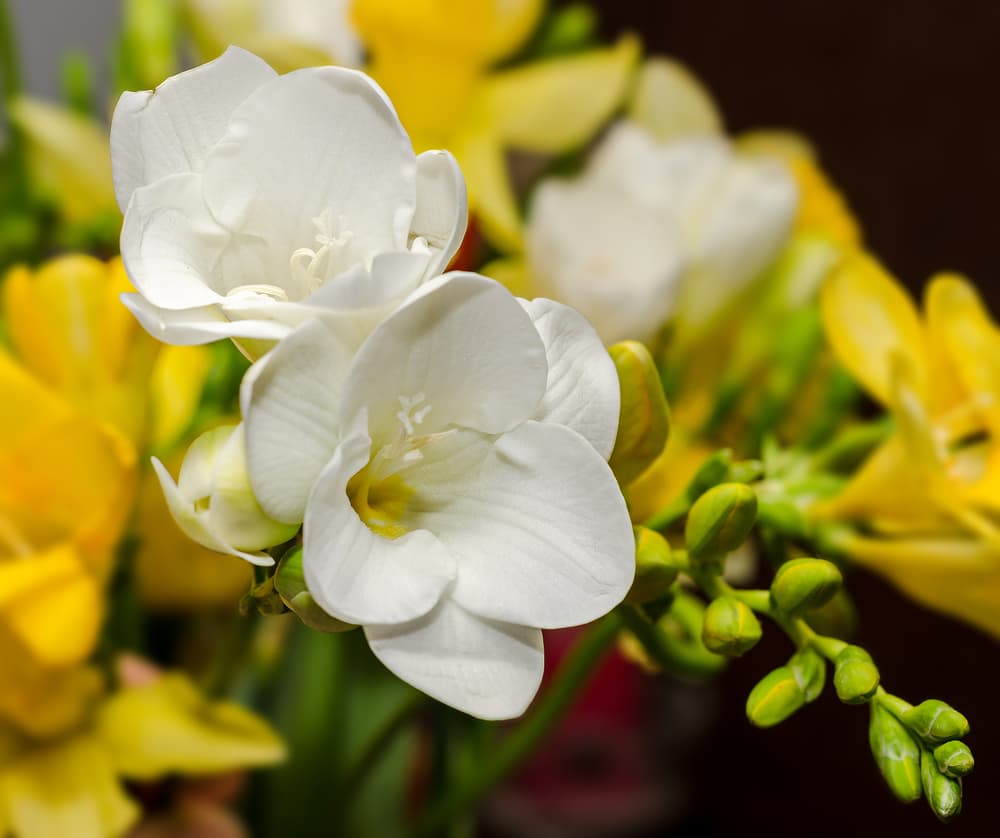
AKA: ‘Milky-White Freesia’
Has very narrow linear leaves and produces flowers of an opaque white tone – milky white.
The funnel-shaped blooms are among the most fragrant and also among the biggest at 5-6cm.
7) F. ‘White River’

Has very narrow leaves and produces funnel-shaped flowers that are pure white.
For a cultivar, the strong, wonderful fragrance of the blooms is quite remarkable.
8) F. ‘Belleville’
A favourite in bouquets and is a big seller for florists.
It produces perfectly-formed trumpet-shaped double flowers.
They are pure white, sometimes set off by a creamy-yellow throat.
9) F. ‘Elan’
Produces fairly large, flared flowers measuring 5-6cm.
These are of a pastel purple hue with a creamy white throat.
10) F. ‘Blue Moon’
Produces narrow trumpet-shaped flowers that are of an exquisite pastel lilac-lavender tone.
11) F. ‘Fragrant Sunburst’
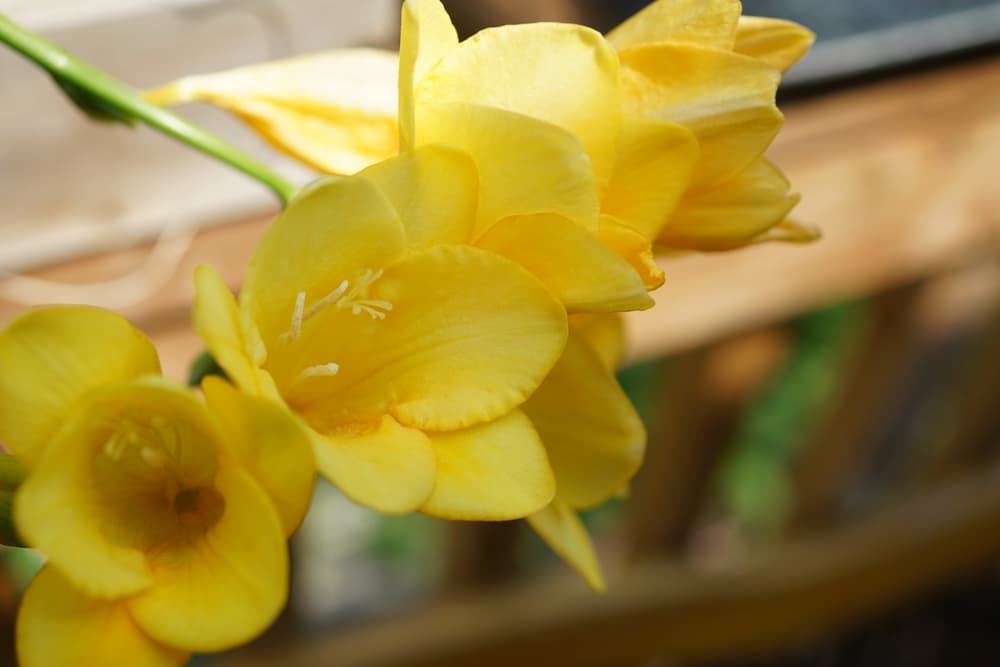
Produces perfect trumpet-shaped flowers that are relatively large at about 6cm.
They also have a strong but pleasing fragrance – they are a light or pastel shade of yellow.
12) F. ‘Golden Yellow’

Produces narrow trumpet-shaped flowers that are quite striking, being of an exceptionally bright, sunny yellow.
13) Tritonia crocata
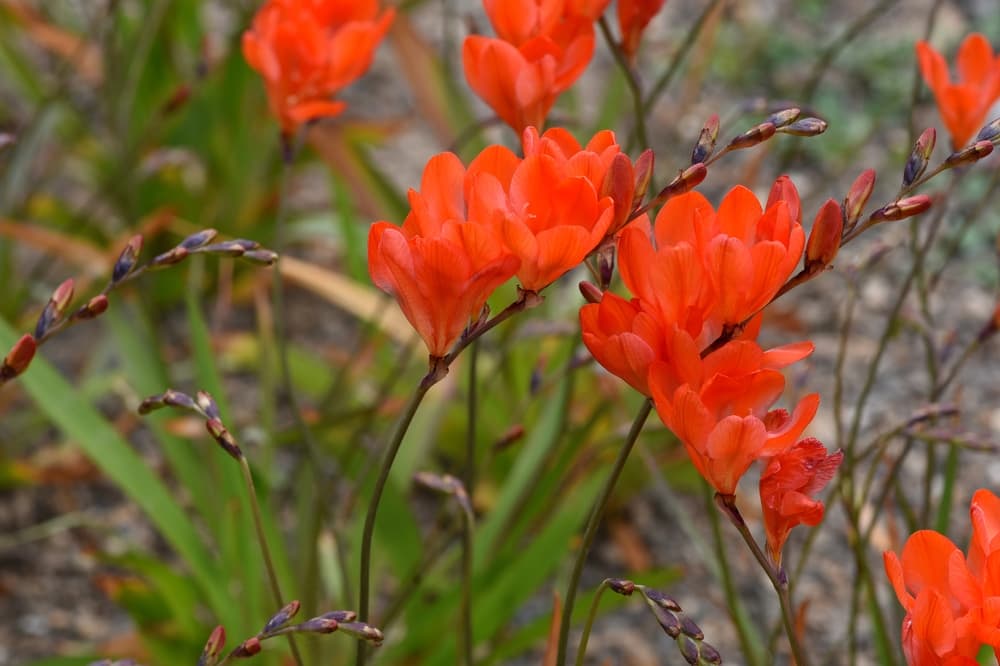
AKA: ‘Flame Freesia’
Native to South Africa.
As one of the ‘False Freesias’ it produces cup-shaped flowers that are on the small side.
They are orange to vermilion and have yellow accents on the lower (three) tepals.
RHS Award of Garden Merit.
14) Tritonia laxifolia
Another ‘Flame Freesia’ but this one hails from further north as it grows in Tanzania.
The leaves are narrow and of a sparkling light green hue.
The flowers are trumpet-shaped, are highly scented, and are of a dusky, sunset orange hue.
15) F. ‘Oberon’

A bicoloured stunner.
The flower is golden-yellow at the centre and orange to vermilion at the outside; however, the balance of colours varies from plant to plant.
In some you will notice a small yellow centre with the majority of the flower in a near-red colour; on others you will get the majority of the flower in golden-yellow with a thick orange border.
16) F. ‘Red Lion’
Produces funnel-shaped flowers that are genuine eye-pullers as they are a hard, deep red through and through.
17) F. ‘Red River’

Another stunning bi-coloured variety.
It produces flared, funnel-shaped flowers – they are bright red to lipstick red with prominent golden-yellow throats with the yellow colour sometimes radiating or gradating outward.
References
- 1Freesia. (n.d.-b). Mindat. Retrieved March 16, 2023, from https://www.mindat.org/taxon-2747044.html
- 2Freesia. (n.d.-c). Kew Royal Botanic Gardens. Retrieved March 16, 2023, from https://powo.science.kew.org/taxon/urn:lsid:ipni.org:names:331198-2


